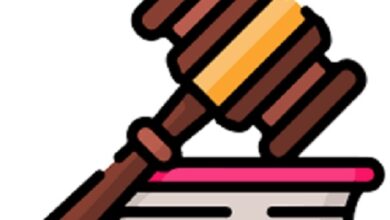What is Information types Uses characteristics and in society
Information
Information is an organized set of relevant data for one or more subjects who extract knowledge from it. That is to say, it is a series of knowledge communicated, shared or transmitted and that therefore constitutes some type of message . However, its definition varies depending on the discipline or approach from which it is thought.
For example, in biology , it is understood as the set of sensory stimuli exchanged by living beings , while in journalism , it is the set of messages exchanged by the actors of a given society . To this we could add definitions from computer science , cybernetics or thermodynamics .
Types of information
It can be classified in many different ways, according to numerous criteria. One of the most common has to do with the relationship established between the issuers of the information and its eventual or potential recipients, as follows:
- Confidential or classified information. That which can only be accessed by a small group of people , given the secret, dangerous, delicate or private nature of the data contained therein.
- Public information. One that, on the contrary, allows general access to its content by anyone, without requiring special permissions and without having any degree of privacy.
- Personal information. That which belongs to each person, that is to say, which emanates from a specific individual, who can decide with whom to share it or to whom to offer it.
- External information. That which emanates from a body , institution or company , and whose recipients are external bodies or persons.
- Internal information. On the contrary, that which emanates from an organism, institution or company, in order to be consumed internally, without going outside the organization .
Uses
The information has as many uses as the receiver can give it . They range from the mere increase in the knowledge that the student possesses on a specific subject, or perhaps the knowledge applicable to a given situation, that is, useful knowledge. Reading a user manual for a device will provide us with immediately applicable information, for example.
Other uses of the information may be more strategic, allowing the receiver to carry out better decision-making , better control processes, better evaluation rules or a better choice of alternatives, depending on what we mean.
Characteristics
It, broadly speaking, meets the following characteristics:
- Meaning. That is, semantic, thematic, contextual content or of some other nature, that each individual will use according to their own criteria.
- Importance. Although the importance of information is always relative to the receiver, that is, it depends on each person, taking into account how much the data received alters the behavior of individuals. The relevant information produces important or immediate changes, the little relevant does not produce anything.
- Validity. Validity is understood as the validity of the information over time , that is, if it is outdated or updated, which always depends on the Communication” in the 1960s. The historical context and its recipients.
- Validity. The information will be more or less reliable, more or less credible or valid, depending on the sender and the receiver’s criteria. If the latter considers that the issuer is not reliable, the information it issues will lose importance.
- Worth. Some type of specific use for the recipient, even if it is merely informative.
Information in society
Information is a precious commodity in human society and even in some animal societies. On the one hand, the management of information can affect the behavior of individuals, since it allows Each type of memory has its own operation, although all of them cooperate to carry out a complete memorization process. This is complex forms of cooperation and organization .
On the other hand, the accumulation of information and knowledge allows us to open the door to revolutionary changes in society, either from the hand of the scientific – technological , or the philosophical , or the political-social.
In society, information can be freely distributed, or it can be part of private assets , as in the case of manufacturing industries , which hide the specific recipe for the production of their most valued goods, so that they do not fall into the hands of the public. competence.
Information and Status
Propaganda and censorship have always been ways in which the State controls what information circulates freely and what does not. This has become more complex in the so-called ” information society ” and thanks to the new Information and Communication Technologies (ICT).
This issue is the study of social classes stands out. This topic involves many aspects and can be understood from different angles; therefore, it is the subject of national and international debate, especially since the Internet questioned the traditional idea of country and border. Today, computer networks allow information to circulate much faster and over much greater distances than ever before in human history.
On the other hand, scandals such as the one that occurred in the US electoral campaign won by Donald Trump, known as the “Cambridge Analytica” case, reveal the important incidence of information in the life of States in the 21st century.
computer information
For computing, understood precisely as the science of information management, this concept is understood as explicit knowledge, accumulated by living beings or expert systems when interacting with their environment. It has the value of being able to be stored, organized and retrieved.
That is what, after all, computers are for : large information classification, retrieval and transmission systems, the latter contained in electronic storage formats.
Analog and digital information
We speak of analog and digital information within the framework of electronics , to differentiate two types of signal. The amplitude of the analog signal can vary freely , taking any value (of electrical voltage).
For its part, a digital signal is one that has limit bands with respect to the amplitude that it can take, and that are predetermined. This means that digital signals are not continuous, but discrete, devoid of the typical noise that analog signals have.



